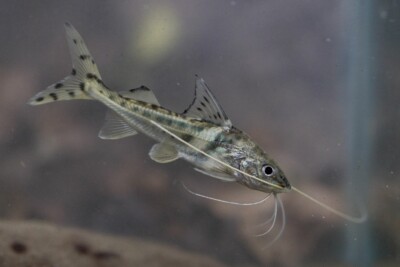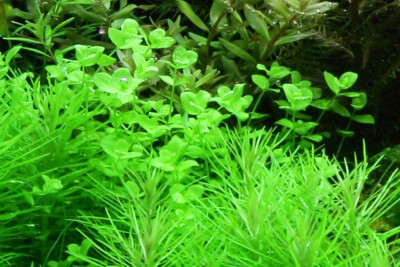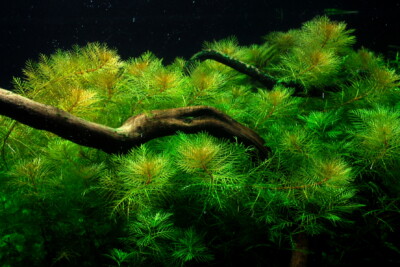Aegla platensis
| Scientific name | Aegla platensis |
|---|---|
| Descriptor | Aegla platensis Schmitt |
| Year of description | 1942 |
| IUCN category (World) | NE |
| Family | Aeglidae |
| Genus | Aegla |


Introduction
Aegla platensis is a little fresh water crustacea from the Amérique du Sud.
This sheet is currently being prepared. The texts currently proposed come from our data model or are being drafted. To request priority for this content, you can write to us HERE.
Who is it?
Morphology
-
Average size4 cm
-
Maximum size5 cm
-
Average size4 cm
-
Maximum size5 cm
How to recognize this crustacea ?
Aegla platensis measures between 4 and 5 cm. Given its small size, this species is commonly referred to as a "dwarf" animal.
Neither crayfish, nor crab, despite its strong resemblance, the anomoure has 5 pairs of legs, but the fifth pair, very small, is not used. Its carapace is strongly armored and its abdomen partly folded.
Sexual dimorphism
Behaviour & Life cycle
-
Sociabilityliving in small groups
-
territorialNo
-
VenomousNo
-
Way of livingdiurnal
Like all crustaceans, Aegla platensis molts whenever it becomes cramped in its shell. Before the hardening of its new body, it is more vulnerable and spends a good part of its time hidden. This mechanism, very complex, allows the periodic renewal of the exoskeleton and part of the internal skeleton. It is also during the moult that the females become fertile.
Aegla platensis is a crustacea living in small groups naturally found on the bottom. This species is omnivorous . Naturally, it tends to dig into the sand and transform its environment. Measuring only a few centimeters, this small species tends to be discreet and hide in the presence of larger neighbors.
Although Aegla platensis is non-territorial, it is sometimes aggressive towards other species.
Reproduction
Like a crab or a crayfish, the females incubate numerous eggs under their abdomen. It is an exclusively freshwater species, the whole reproduction process takes place in fresh water. This species follows a mode of reproduction called "direct development". After several weeks of incubation, the female gives birth to fully formed juveniles ready to fend for themselves.
Harmless species
This species does not represent any particular threats to humans when encountered in its natural environment.
Origin and distribution
Conservation status of populations (IUCN)
What is its habitat?
Natural environment characteristics
-
Temperature18 - 23 °C
-
pH (acidity)6 - 8
-
gh (hardness)3 - 15
-
FlowStrong
Biotope presentation
Aegla platensis prefers well oxygenated waters in current areas and rapids. It frequents fast flowing waters where the bottom is strewn with pebbles, wood or leaves carried by the current. It can be found not far from waterfalls .
Species of the same biotope
Main recommendations for fishkeeping
Deontology
In order to preserve wildlife, if you acquire this animal, it must not be released into the wild. See also, the Fishipedia charter.
Fishipedia supports the practice of responsible and environmentally friendly aquarium keeping. We encourage maintenance if it is motivated by a desire to understand the biological functioning of living things and if it is done with respect for animal life.
We believe that aquaristics is an opening to the discovery of aquatic environments, especially freshwater, and that this knowledge is necessary to better protect and respect these environments. Logically, we refute the compulsive purchase of animals that would not find a sufficient and / or adapted place in the host aquarium.
Our recommendationsThese tips apply to adult species from breeding. With regards to water conditions, wild species or close relatives must be kept under the same conditions as in their area of origin.
-
Min volume80 liters
-
Population min6
-
Temperature18 - 23 °C
-
pH (acidity)6 - 8
CharacteristicsThe characteristics below apply for adult species. They correspond to an average of cases, validated in maintenance condition.
-
Type of maintenanceAquarium
-
Maintenance difficultyThe farming difficulty is relative. It depends on experiments already carried out with similar species. First, it takes into consideration the robustness of the species, the ease of recreation of a favorable environment and the general behaviour with the other inhabitants of the aquarium.moderate
-
Availabilityrare
-
Behaviourslightly aggressive
-
Robustnessrobust
-
Environmentfresh water
-
Breedingfresh water
Recommended equipment from our partners
-
Aquarium
-
Filtration
General reminders
It is strongly advised to read the complete dedicated file and to get information on the feedbacks of maintenance of the envisaged animal, this to avoid any potential conflict whose end result is generally the death of the individual (or the other inhabitants). It is important not to overload your aquarium to limit pollution. This will make maintenance easier.
In nature, animals are subject to weather conditions and live in waters with variable characteristics. The recommendations offered by our team for aquarium maintenance are a guidance and cannot be assimilated to scientific datas.
General reminder on maintenance datas
Le démarrage d'un aquarium est une partie primordiale pour l'équilibre et le bien-être des poissons. Lorsque l'on met en eau un aquarium, l'eau passe naturellement par un cycle biologique : le cycle de l'azote. Celui-ci dure environ trois semaines. Tous les 2 jours, nous vous conseillons de tester votre eau jusqu'à ce que le taux de nitrite soit à zéro pendant plusieurs jours d'affilée.
Pour accélérer ce cycle, vous pouvez utiliser un activateur de bactéries comme JBL Denitrol. Cette solution riche en bactéries vivantes et enzymes permet une mise en place rapide du cycle de l'azote. Les poissons peuvent alors être introduits plus rapidement.
Il est important de tester l'eau de son aquarium régulièrement pour maintenir un environnement sain pour les poissons et les autres habitants. Les tests d'eau permettent de mesurer les niveaux de différents paramètres tels que le pH, la dureté totale, ainsi que les taux de nitrates, de nitrites et d'ammoniaque.
Pour réaliser ces tests, vous pouvez utiliser des produits d'analyse spécialisés tels que JBL ProScan qui permet de réaliser un diagnostic de l'eau directement via un smartphone. Il existe également des coffrets de tests plus classiques de bandelettes, comme JBL PROAQUATEST.
En cas d’usage de l’eau du robinet, vous pouvez utiliser un conditionneur d’eau de type Biotopol de JBL pour éliminer les substances nocives comme le chlore, le cuivre, le plomb et le zinc. Les conditionneurs d'eau garantissent une meilleure santé aux poissons et une meilleure croissance des plantes.
Chlorine and chloramine are dangerous for the health of animals. Used to disinfect water, these agents are present in significant quantities in tap water. We recommend using an anti-chlorine agent every time you change the water. In addition to chlorine, treatments and medicines sold for aquarium use sometimes contain dangerous heavy metals in high doses.
Specific needs for Aegla platensis
Aegla platensis is a species which lives naturally at a temperature between 18 °C and 23 °C. For proper maintenance, the temperature should never exceed the 26°C for long periods. Nitrate levels should remain below 50mg/L. To keep the water clean and unpolluted, plan on changing 20% to 30% of the water volume each month.
The breeding of this species is accessible on condition of being well informed about its needs in aquarium . Any cohabitants must be chosen with care to avoid the loss of animals.
This species is very rare in the aquarium trade. Instead, it is maintained by knowledgeable aquarists who own and breed individuals from wild origin strains. If you want to get this species, we advise you to contact specialized clubs. }Specimens from long time breeding are a bit easier to breed but you have to respect the particular water parameters.
Copper is toxic to many invertebrates. Some fertilizers and aquarium foods contain copper sulfate and should be used with caution. Since Aegla platensis are sensitive to copper, we do not recommend using these products in any form.
Heating not required
As this species is used to living in fairly cool water, the presence of a resistance is not necessary in your aquarium. Also be careful to control the temperature of your tank in summer.Formal incompatibilities
Cohabitation & Environment
Being a living in small groups crustacea, it is advisable to install at least 6 individuals in an aquarium of 80 liters minimum. The maintenance in groups allows to observe its natural behavior within the aquarium. Warning, mixing several species living in the same living area is not recommended if the volume is not significant.
Due to their fragile state during moulting, all crustaceans need an environment provided with hiding places (roots, pebbles, leaves, plants, etc.) to shelter in case of danger.
It should be noticed that this species should not be kept with large crustaceans or fish, as it would become a prey of choice. Smaller species should preferably be inserted in the aquarium some time before the larger ones. Moreover, if you want to breed it, it is better to put them in a specific aquarium.As previously said, Aegla platensis is a species that lives naturally in the current. Thus, we advise the installation of an oversized filtration system (10 to 20 times the volume of the tank) in order to guarantee a strong current and especially a strong oxygenation. A venturi system will improve the dissolved oxygen rate during summer.
Be careful, this species does not appreciate plants and will end up destroying, uprooting or nibbling them. It will not be possible to make an aquarium planted in its presence.
Tips for feeding
Aegla platensis is omnivorous.
Reproduction protocol
-
Maintenance difficultyeasy
-
egg-laying protectionNo
Reproduction of this species in an aquarium is considered easy.
Reproduction of this species is feasible in captivity, with the entire process taking place in fresh water. If the water conditions are met, the females will give birth to fully formed larvae that are ready to fend for themselves at birth.
Hybridization risks
In general, it is advised not to mix several species of the same genus or different varieties of the same species, to avoid the risks of hybridization.
These plants might interest you
Plants play a crucial role in aquariums, both for their ability to filter water by absorbing excess nutrients and for their aesthetic contribution. They provide fish with natural hiding places, can serve as breeding sites, and generally help maintain the overall balance and optimal conditions of the aquarium. The selection presented here includes species from the same regions as the species described on this page, although they do not necessarily come from its exact natural biotope.
To go further
Sources & Contributions
Participation & Validation
The Fishipedia team and specialist contributors are committed to providing high-quality content. However, although the information comes from scientific sources or testimonials from specialists, the cards may contain inaccuracies.

Jérôme Picard
Translation
Translation done with the valuable contribution of our translators, who make this information available to a wider audience. We sincerely thank them for their commitment.



















